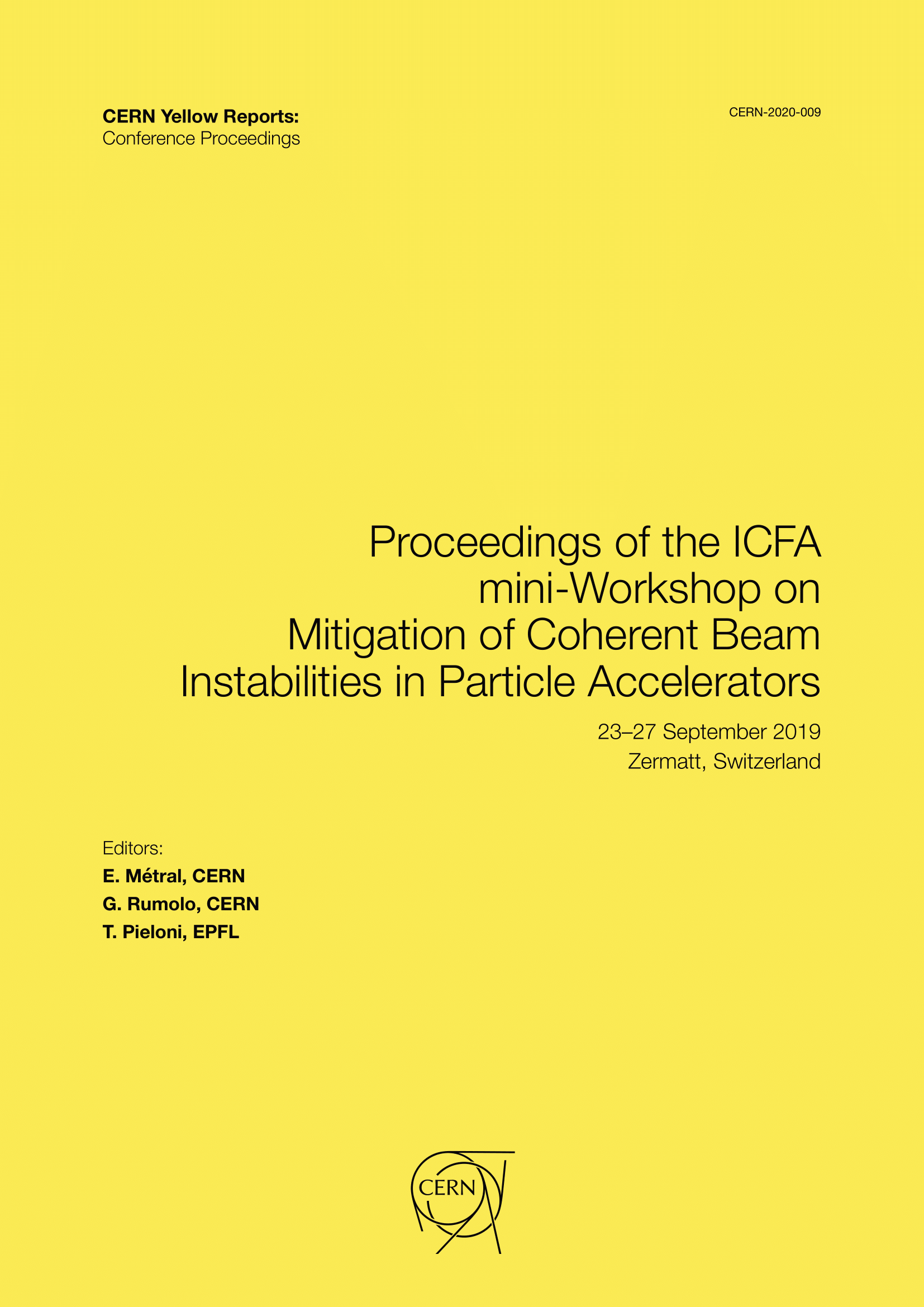Time domain measurements of the sub-THz response of different coatings for beam pipe walls
DOI:
https://doi.org/10.23732/CYRCP-2020-009.300Abstract
Modern accelerators and light sources often require special treatment of the vacuum chamber surface in order to avoid undesirable effects and maximize machine performance. Coatings with Non Evaporable Getter compounds and amorphous Carbon have been extensively tested and used with very effective results since they allow to reduce the secondary electron emission from pipe walls and therefore the relevant beam instability. An electromagnetic characterization of such coatings is therefore fundamental to build a reliable impedance model. We present here a method based on time domain measurements of an electromagnetic wave passing through a tailored waveguide, where the material under test is deposited on a planar slab. This configuration allows an easy measure of samples having a homogeneous coating thickness and a reasonable area, with parameters chosen in order to have a good signal-to-noise ratio, avoiding at the same time problems due to peel-off and blistering during deposition. The study on the electromagnetic response is performed in the frequency range from 0.1 to 0.3 THz, corresponding to the first transverse electric (TE) mode propagation inside the designed waveguide.
Downloads
Published
Issue
Section
License
Copyright (c) 2021 CERN

This work is licensed under a Creative Commons Attribution 4.0 International License.
Authors who publish with this publication agree to the following terms:
- CERN retains copyright and publishes the work licensed under the Creative Commons Attribution License 4.0 that allows others to share the work with an acknowledgement of the work's authorship and initial publication in this series.
- Authors are able to enter into separate, additional contractual arrangements for distribution of the published version of the work (e.g., post it to an institutional repository or publish it in a book), with an acknowledgement of its initial publication in this series.
- Authors are permitted and encouraged to post their work online (e.g., in institutional repositories or on their website) prior to and during the submission process, as it can lead to productive exchanges, as well as earlier and greater citation of published work (See The Effect of Open Access).

